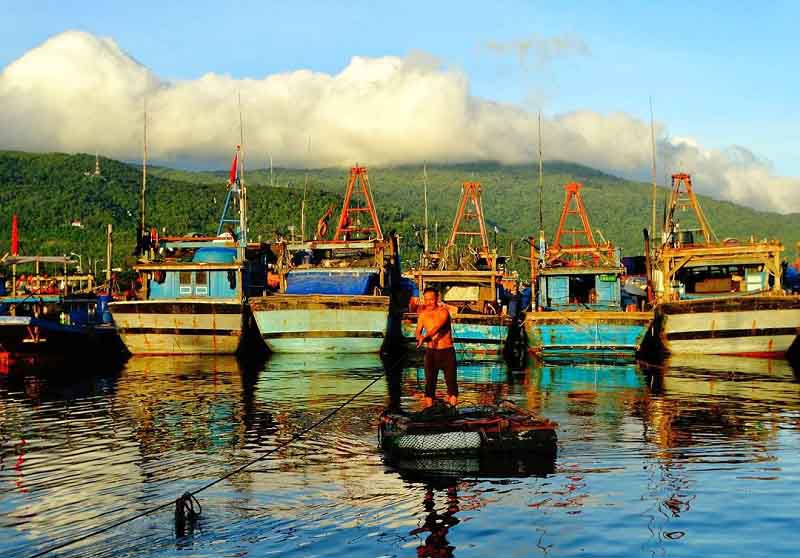Imagine immersing yourself in the rich local culture of Thailand’s charming fishing villages. Embark on a journey that takes you beyond the bustling tourist attractions and into the heart of these coastal communities. Explore the vibrant cities of Thailand, indulge in delicious Thai cuisine, and discover pristine beaches that stretch as far as the eye can see. This unique experience offers a captivating glimpse into the daily lives of local fishermen, as you witness their time-honored traditions and learn about their deep connection to the sea. Come, join us on this unforgettable adventure as we delve into Thailand’s charming fishing villages and uncover the hidden treasures they hold.
Introduction
Thailand, renowned for its stunning beaches and vibrant cities, is also home to numerous charming fishing villages that offer a glimpse into the local way of life. These villages, scattered along the country’s coastal regions, island communities, and riversides, hold immense historical significance and play a vital role in the country’s economy. With their unique cultural influences, traditional practices, and picturesque landscapes, Thailand’s fishing villages have become an attractive destination for both local and international travelers. In this article, we will explore the importance of fishing villages in Thailand, their geographical distribution, cultural influences, must-visit villages, unique features, activities and experiences, sustainable tourism efforts, and accommodations in these idyllic settings.
The Importance of Fishing Villages in Thailand
Historical Significance
Thailand’s fishing villages have played a significant role in the country’s history. These settlements have been the backbone of the coastal communities, dating back centuries. The villages served as important trading hubs, connecting Thailand to other regions in Asia. The abundant marine resources provided sustenance and livelihoods for generations, shaping the cultural fabric of these communities. Exploring these fishing villages can transport you back in time, offering insights into the traditional ways of coastal living.
Economic Impact
Fishing villages form an integral part of Thailand’s economy. The communities engage in various fishing practices, including both small-scale and commercial fishing. The sustainable utilization of marine resources by these fishermen contributes to the country’s seafood industry, which is a significant revenue generator. Fishing villages also support ancillary businesses such as seafood markets, processing plants, and restaurants, further boosting local economies. Tourism has become another crucial source of income for these communities, as travelers seek authentic experiences in these picturesque fishing villages.
Preservation Efforts
Recognizing the cultural and economic importance of fishing villages, there have been concerted efforts to preserve and protect these communities. Government initiatives and non-profit organizations work together to promote sustainable fishing practices, preserve traditional knowledge, and ensure the welfare of the communities. These preservation efforts aim to strike a balance between economic development and cultural preservation, allowing future generations to continue enjoying the rich heritage of Thailand’s fishing villages.
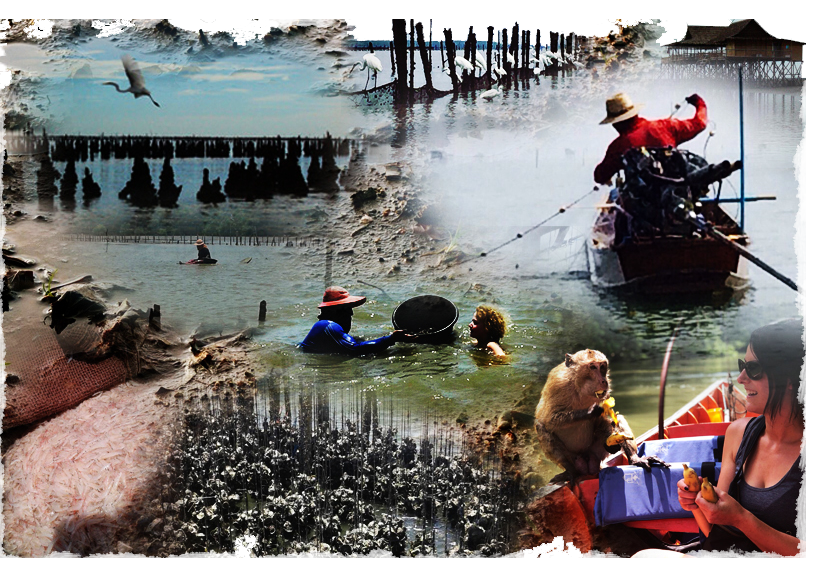
Geographical Distribution of Fishing Villages
Coastal Regions
Thailand’s extensive coastline is dotted with fishing villages, each with its own unique charm. From the Andaman Sea to the Gulf of Thailand, you can find fishing communities bustling with activity. The coastal regions offer breathtaking views of the ocean and are often surrounded by stunning beaches, making them a popular destination for tourists seeking both natural beauty and cultural experiences.
Island Communities
Thailand’s numerous islands are home to thriving fishing villages that have sustained themselves for generations. Islands like Koh Panyi, Koh Lanta, and Koh Yao Noi showcase the idyllic village life with their stilt houses, vibrant markets, and pristine scenery. These island communities are often secluded from the mainland, offering a quaint and tranquil setting for visitors to immerse themselves in the local culture.
Riverside Settlements
Thailand’s rivers, including the Mae Klong and Chao Phraya, are lined with charming fishing villages. Riverside settlements like Ban Tha Thong, Ban Laem Pho, Ban Sam Chong Tai, and Ban Krood offer a unique glimpse into riverine living. The rivers provide a sustainable source of fish, and the villages capitalize on their proximity to waterways by offering boat tours, opportunities to witness traditional fishing methods, and mesmerizing views of life along the riverbanks.
Influences of Thai Culture on Fishing Villages
Buddhist Traditions
Thailand’s fishing villages are deeply influenced by Buddhist traditions. Temples, known as “wats,” often serve as central gathering points for the communities, providing spiritual guidance and a sense of unity. Many fishermen and their families actively participate in temple rituals and festivals, exemplifying the harmonious integration of religion and everyday life. Visitors to fishing villages can witness Buddhist practices, such as morning alms-giving or participating in religious ceremonies, which further enriches their cultural experience.
Culinary Practices
Thai cuisine is renowned worldwide for its bold flavors and vibrant ingredients, and fishing villages are at the heart of this culinary tradition. With their access to a bountiful supply of fresh seafood, these communities offer some of the most authentic and delicious seafood dishes you can find. From spicy curries to mouth-watering grilled fish, exploring the local eateries in fishing villages will treat your taste buds to an unforgettable culinary adventure.
Traditional Festivals
Fishing villages in Thailand celebrate a myriad of traditional festivals throughout the year. These festivals often highlight the deep connection between the communities and the sea. The Loy Krathong festival, where residents pay their respects to the water spirits by releasing beautifully crafted floats into the rivers, is one such event that showcases the reverence for the natural environment. Visitors to fishing villages during these festivals can partake in the festivities, witnessing traditional dances, music performances, and colorful processions.
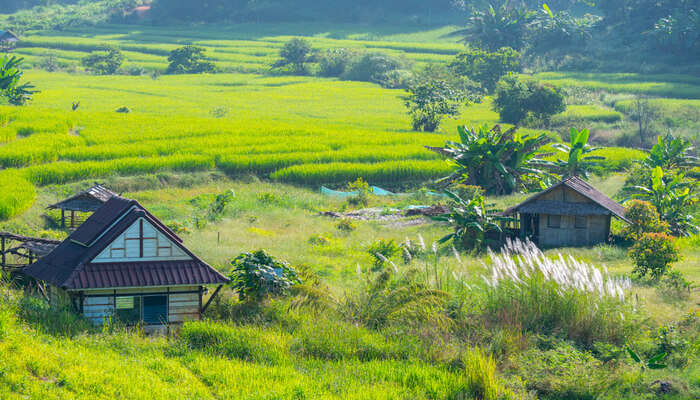
Top Fishing Villages to Explore
Ban Laem Makham
Situated on the eastern coast of Thailand, Ban Laem Makham offers a serene fishing village experience. The village is known for its tranquil atmosphere and untouched beauty. Visitors can stroll along the pristine beach, watch fishermen return with their catch, and sample fresh seafood at the local restaurants.
Koh Panyi
Located in Phang Nga Province, Koh Panyi is a floating fishing village built on stilts over the water. This unique settlement showcases the resilience and adaptability of the locals. Explore the narrow walkways, browse the handicrafts made by villagers, and savor the flavors of Thai cuisine at the floating restaurants.
Koh Lanta
Koh Lanta is a picturesque island in the Andaman Sea known for its stunning scenery and vibrant fishing communities. Visitors can explore Ban Sala Dan and Ban Ko Lanta Yai, two prominent fishing villages, and witness the daily lives of the fishermen. Enjoy the pristine beaches, go snorkeling or scuba diving, and savor delicious seafood dishes at the local restaurants.
Koh Yao Noi
Situated between Krabi and Phuket, Koh Yao Noi is a hidden gem among the Thai islands. The island boasts a traditional fishing village with a strong sense of community. Experience the simplicity of island life, cycle through the scenic landscapes, and interact with the friendly villagers to gain a deeper understanding of their way of life.
Ban Tha Thong
Located along the banks of the Mae Klong River, Ban Tha Thong offers a unique glimpse into riverside living. Visitors can take boat tours through the village, witnessing traditional fishing techniques and enjoying the peaceful surroundings. Don’t miss the vibrant Tha Kha Floating Market, where boats line up to sell fresh produce and delicious local treats.
Mae Klong
Mae Klong, a riverside town known for its bustling markets and fishing activities, is an ideal destination for those seeking an authentic Thai experience. Visitors can explore the vibrant Maeklong Railway Market, where vendors quickly pack up their stalls as the train passes through. The town also offers boat tours along the river, providing insights into the local fishing practices.
Ban Laem Pho
Nestled along the Chao Phraya River, Ban Laem Pho is a charming fishing village that captivates visitors with its idyllic scenery. Take a boat tour along the river, visit the local temple Wat Wang Won, and savor freshly caught fish at the riverside restaurants. This village offers a peaceful respite from the hustle and bustle of city life.
Ban Sam Chong Tai
Ban Sam Chong Tai, located in Suphan Buri Province, provides a unique blend of fishing village life and agricultural practices. Visitors can witness the traditional fishing methods employed by the locals and explore the lush, verdant landscapes that surround the village. Don’t forget to indulge in local delicacies like Pla Chon, a grilled snakehead fish.
Ban Krood
Situated along the Gulf of Thailand, Ban Krood is a coastal fishing village renowned for its stunning beach and natural beauty. The village offers a peaceful escape from tourist crowds, allowing visitors to unwind and immerse themselves in the local way of life. Enjoy fresh seafood at beachside restaurants, wander along the golden sands, and witness the mesmerizing sunset views that make this village truly unforgettable.
Ba-Ban
Located in Chanthaburi Province, Ba-Ban offers a glimpse into the unique culture and traditions of a fishing village nestled among fruit orchards. Visitors can explore the local markets, taste tropical fruits, and interact with the friendly villagers. Don’t miss the chance to witness the annual ‘Chanthaboon Mat Mee’ festival, which showcases the art of Thai silk weaving.
Unique Features of Fishing Villages
Stilt Houses and Floating Markets
One of the most distinctive features of Thailand’s fishing villages is the presence of stilt houses and floating markets. These architectural marvels blend seamlessly with the surrounding waterways, providing the locals with easy access to their boats and the abundant resources of the sea. Stroll along the wooden walkways, marvel at the colorful facades of the stilt houses, and navigate through the floating markets bustling with locals and tourists.
Colorful Fishing Boats
A sight to behold, the colorful fishing boats that dot the shores of Thailand’s fishing villages add vibrancy to the coastal landscapes. Adorned with intricate designs and often featuring auspicious symbols, these boats showcase the pride and artistic flair of the fishermen. Walking along the shores, you’ll be captivated by the vibrant hues and the dazzling reflection of sunlight on these traditional vessels.
Local Handicrafts
Thailand’s fishing villages are often centers of traditional craftsmanship. Villagers skillfully produce a variety of handicrafts using locally sourced materials. From intricate wood carvings and handmade pottery to traditional weaving and basketry, these crafts reflect the deep connection between the villagers and their environment. Support the local artisans by purchasing these unique and authentic handicrafts as souvenirs of your visit.
Traditional Fishing Techniques
Exploring fishing villages in Thailand offers an opportunity to witness traditional fishing techniques that have been passed down through generations. From net casting to basket traps and longline fishing, these methods demonstrate the villagers’ expertise and close relationship with the sea. Engage with the locals, learn about their fishing traditions, and gain insight into their sustainable practices aimed at preserving the delicate balance of marine ecosystems.
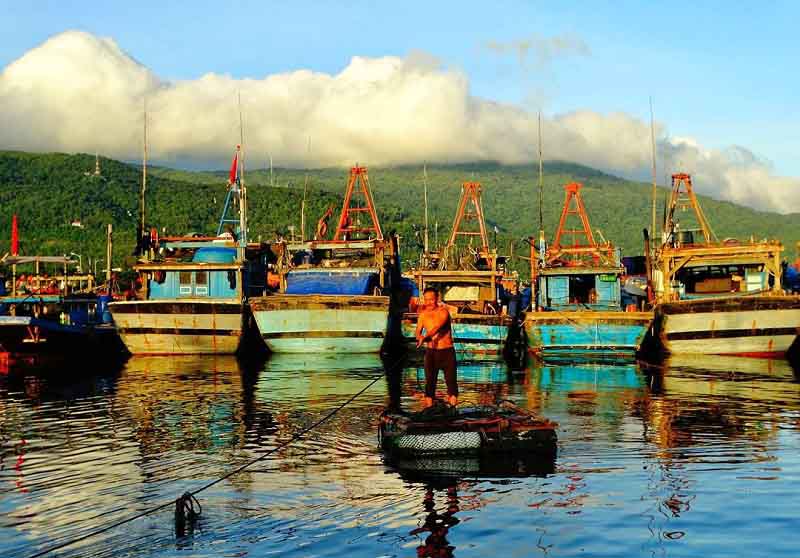
Activities and Experiences in Fishing Villages
Sample Fresh Seafood
Thailand’s fishing villages offer a culinary paradise for seafood lovers. Indulge in the incredible array of dishes prepared with freshly caught fish, prawns, squid, and shellfish. From flavorful curries and spicy stir-fried delicacies to mouthwatering grilled seafood, the local restaurants in fishing villages will treat your taste buds to an authentic and unforgettable dining experience.
Take a Boat Tour
Immerse yourself in the daily lives of fishermen by taking a boat tour through the fishing villages. Witness the skillful maneuvers of Thai longtail boats and traditional fishing vessels as the locals navigate the waterways. Learn about the different fishing techniques, witness the breathtaking landscapes, and capture memorable photos of the vibrant stilt houses and bustling markets.
Learn Traditional Fishing Methods
Engage with the fishing communities and learn about their traditional fishing methods. Join the locals as they cast fishing nets, set up traps, or gather clams along the shores. Experienced fishermen will be delighted to share their knowledge and teach you the skills passed down through generations. This hands-on experience offers a unique insight into the villagers’ way of life and their sustainable fishing practices.
Participate in Local Festivals
Timing your visit to coincide with local festivals can provide a deeper cultural immersion. Festivals like the Loy Krathong, Songkran, and local fishing festivals offer vibrant displays of Thai traditions, music, and dance performances. Participate in the festivities, witness traditional ceremonies, and enjoy the sense of community as the villagers come together to celebrate their customs.
Visit Fishermen’s Houses
Take the opportunity to visit the homes of local fishermen and gain a glimpse into their daily routines and family life. Experience the warm hospitality of the villagers as they welcome you into their stilt houses or riverside residences. Engage in conversations, share stories, and appreciate the simple joys and values that form the foundation of their tight-knit communities.
Sustainable Tourism in Fishing Villages
Responsible Fishing Practices
Sustainable fishing practices are gaining recognition in Thailand’s fishing villages. Efforts are underway to promote responsible fishing techniques, such as proper waste management, reduced bycatch, and protection of critical marine habitats. By supporting these communities and educating visitors about the importance of sustainable fishing, tourists can contribute to the preservation of marine ecosystems and the long-term viability of fishing villages.
Promoting Cultural Preservation
Preserving the cultural heritage of fishing villages is essential in maintaining the authenticity and uniqueness of these communities. Travelers can actively engage with the locals, show respect for their traditions, and support cultural preservation initiatives. By encouraging the passing down of knowledge, promoting traditional arts and crafts, and participating in cultural activities, visitors play an active role in safeguarding the cultural identity of these villages.
Supporting Local Communities
When visiting fishing villages in Thailand, supporting the local communities is crucial. Seek out accommodations in guesthouses or homestays operated by the villagers themselves, which directly benefits the local economy. Dine at seafood restaurants that source their ingredients locally, contributing to the sustainability of the fishing industry. Purchase handicrafts and souvenirs from local artisans, ensuring that the revenue goes directly to the communities and helps sustain their way of life.
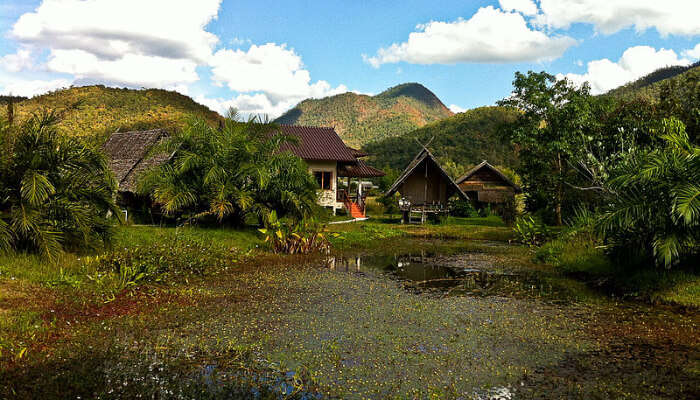
Accommodation and Amenities in Fishing Villages
Guesthouses and Homestays
In fishing villages, guesthouses and homestays provide an authentic and immersive experience. These accommodations are often run by village residents, ensuring a warm welcome and an insight into local life. Stay in comfortably appointed rooms, furnished with traditional décor, and wake up to breathtaking views of the sea or rivers. Interact with the hosts, learn about their customs, and savor home-cooked meals made from the freshest local ingredients.
Seafood Restaurants
Fishing villages are the perfect place to indulge in mouthwatering seafood delicacies. Many fishing villages boast seafood restaurants that offer a wide variety of dishes, from grilled seafood platters and spicy curries to delectable stir-fries. Dine in open-air settings, enjoying the sea breeze and picturesque views while relishing the flavors of freshly caught seafood prepared by experienced chefs.
Souvenir Shops
Exploring fishing villages presents an opportunity to discover distinctive handmade handicrafts and souvenirs. Many villages have small shops selling locally made products such as woven textiles, wooden carvings, and pottery. These authentic keepsakes serve as reminders of your visit to the fishing villages and also support the local artisans and their traditional crafts.
Accessing Fishing Villages in Thailand
Transportation Options
Getting to Thailand’s fishing villages usually involves a combination of transportation modes. Domestic flights are available to major cities like Bangkok, Phuket, and Krabi. From there, travelers can opt for buses, taxis, or private transfers to reach the coastal regions, islands, or riverside settlements. Longtail boats or ferries are often used for inter-island travel and to access villages located on small islands.
Popular Tourist Routes
Several well-established tourist routes make it easier for travelers to explore fishing villages in Thailand. One popular route is the Andaman Sea route, encompassing islands such as Koh Phi Phi, Phuket, and Koh Lanta. The Gulf of Thailand route covers popular destinations like Koh Samui, Koh Tao, and Chumphon. These routes can be tailored to include visits to fishing villages along the way, offering a diverse and enriching itinerary.
Tour Packages and Guides
For those seeking a more structured experience, tour packages and local guides are available to navigate the fishing villages. These packages often include transportation, accommodation, guided tours, and opportunities to participate in local activities. Local guides provide insights into the communities, share cultural knowledge, and act as intermediaries between visitors and the villagers, further enhancing the authenticity of the experience.
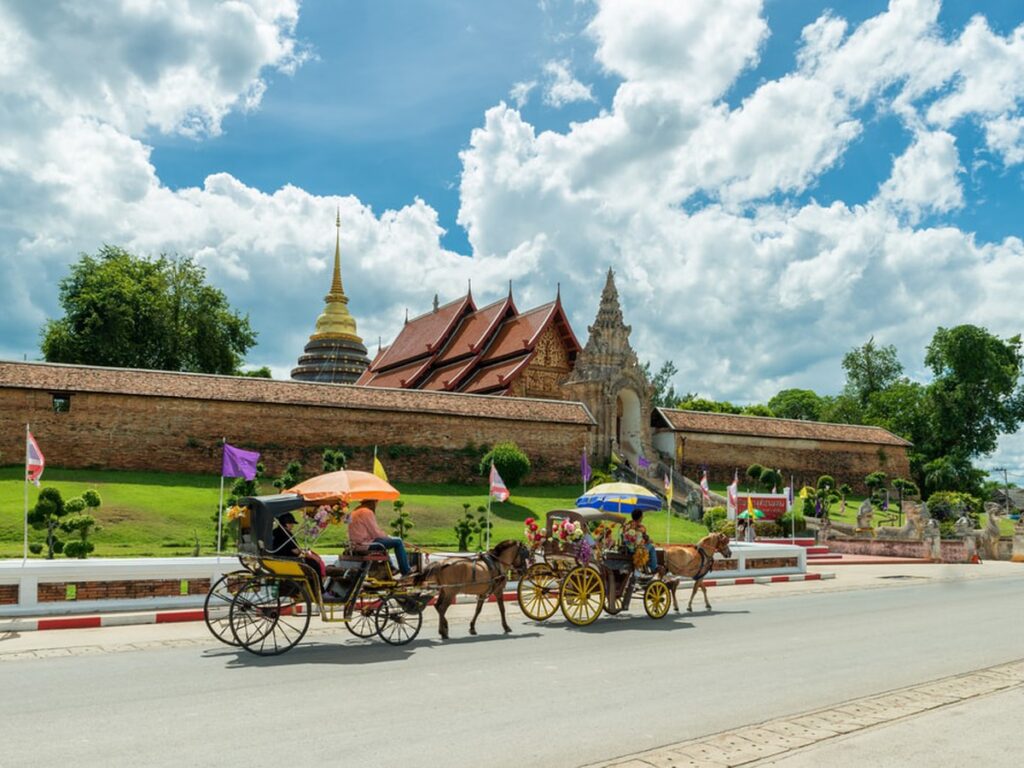
Conclusion
Thailand’s fishing villages offer a unique window into the local way of life, showcasing the historical significance, cultural influences, and economic importance of these vibrant communities. From the stunning coastal regions to the island communities and riverside settlements, there is a plethora of fishing villages waiting to be explored. Engaging with the locals, savoring fresh seafood, witnessing traditional practices, and participating in local festivals provide authentic experiences that leave a lasting impression. By promoting sustainable tourism and supporting the preservation of cultural heritage, visitors can contribute to the continued flourishing of Thailand’s charming fishing villages. So, pack your bags, immerse yourself in the sights and sounds of these idyllic settings, and embark on a journey to Thailand’s fishing villages for an unforgettable adventure.
